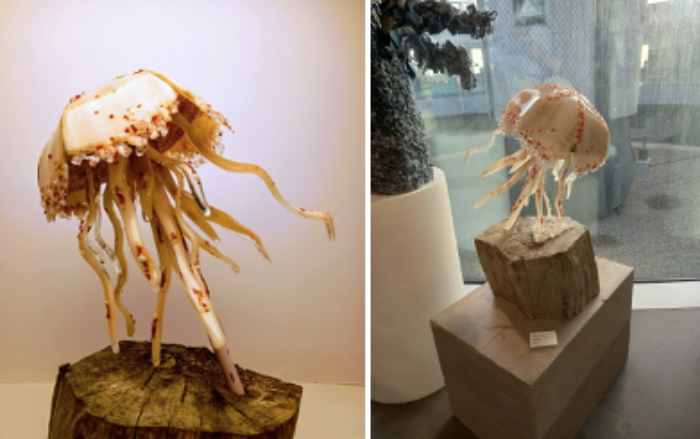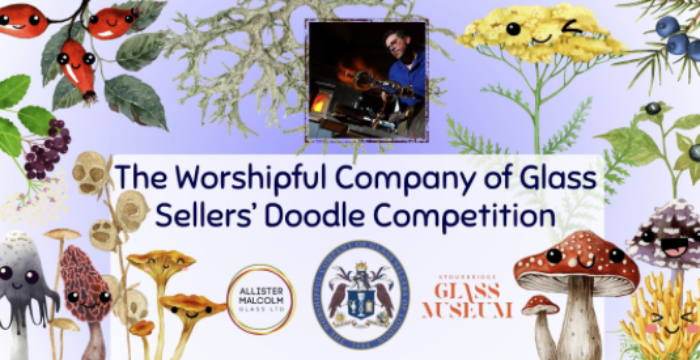
Flying the flag for glass in a general art competition
Glass artist Kate Mercy of Kate Mercy Glass discusses her entry for a selected art competition and exhibition on the theme ‘Metamorphosis’
This wasn’t the first competition I had entered, but it was a step up from previous ones and I believed it would give me the push to create something larger and more artistic. It was the prospect of stretching myself that appealed most.
The organisers accepted media other than paintings and photographs and I felt that a 3D glass piece would fit their criteria.
The theme was ‘Metamorphosis’, though I found later that few seemed to take much notice. Nevertheless, I did, and I came up with a plan for a jellyfish. These creatures go through a number of stages of metamorphosis during their lives, although I did not know that before my research.
This was to be the largest piece I had made and probably the most complex, both in terms of working with the glass and the engineering aspects. I wanted the piece to have impact and make people think, ‘Wow! How did she do that?’
The next question was how to make the piece and to decide how to mount it. Only after I had finished it did I realise the harder question was how I would get it to the exhibition in one piece! But more of that later.
In all, ‘Jelly’, as I was now calling him, went through four firings, first to get the main fused pieces together, next to add additional texture, plus two further firings to achieve the desired shapes. The rest was assembly. The mount was deliberately designed both to show him floating at a jaunty angle and so he could be detached.
I entered Jelly for the exhibition and sat back and waited. I was delighted when I found that out of 1,100 entries, Jelly was just one of 138 selected. As well as feeling personal satisfaction, I thought this was also recognition of the potential of glass as a medium for artistic expression.
While the exhibition was only 50 miles away, the thought of transporting Jelly was daunting. He weighed 10kg and had long, fragile, glass tendrils extending delicately from him glass body. The base was sturdy and, once detached, sat in the boot of the car. But the main body and tendrils needed both support and restraint. As glass is fragile the restraint had to be planned and minimised. In the end my husband and I made a purpose-built cushion for him to sit on upright (actually upside down). This also stopped any movement without the piece having to be tied in any way. We next taped this to a sturdy tray. Though he was now secure, I was not going to take any chances. I spent the entire journey with Jelly and his cushion/tray on my lap while my husband drove … very carefully.
Carrying him into the exhibition hall, the organiser saw him straight away and said, “I wondered how you were going to get him here!” Clearly there had been much discussion. The organiser was nervous of touching him and let us put him in place on his plinth; this would be Jelly’s new home for the next two weeks.
Most of the other pieces on display were paintings and photographs but there were other 3D pieces, mainly in metal or wood. Jelly was the only glass piece.
On the night of the judging we went more in hope than expectation. Sadly, Jelly didn’t win a prize, but many of the other artists and viewers said how much they loved him and how wonderful he was. Sure enough, a number of people asked, “How …?”
The overall experience was precisely what I had wanted – to be stretched in creating my design and putting it into reality, the joy of working on Jelly and then the exhibition itself. I may not have won a prize, but I’ve already decided what my piece for next year’s competition will be. I’ve told the organiser that it will be even bigger and appear more fragile than Jelly. He is so looking forward to it (not!).

